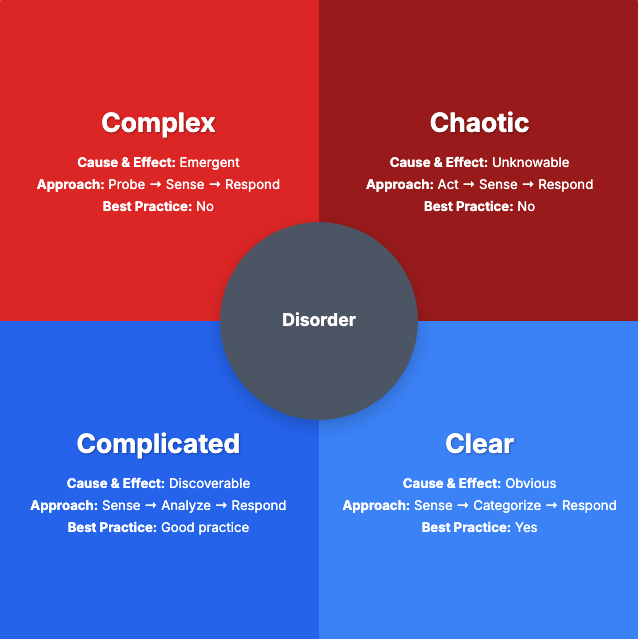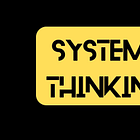10 ideas leaders can use for vertical development
From Skills to Mindsets: how leaders can guide vertical growth & empower future-fit teams to upgrade their mindset to a new way of operating.
Vertical development is about helping people grow their mindset, not just their skills. It's about upgrading their "operating system" so they can handle greater complexity, ambiguity, and change. Instead of just teaching new tasks (horizontal development), it focuses on how people 🧠 think, make sense of the world, and relate to others.
Before starting someone on this journey - there are two general rules - that are actually golden rules in leadership:
Rule #1: model the behaviour. As a leader, you must demonstrate the very qualities you want to cultivate in others. Show vulnerability by admitting when you don't have all the answers. Ask questions rather than providing solutions. Be open to feedback and model a growth-oriented mindset.
Rule #2: promote psychological safety. Create a work environment where people feel safe to take risks, ask for help, and admit mistakes without fear of punishment. Vertical development requires vulnerability and a willingness to be wrong. A psychologically safe culture is essential for this growth to happen.
Here are 10 ideas for how leaders can use vertical development to help their people grow:
1. Provide Heat Experiences
Give people complex, high-stakes challenges that push them outside their comfort zones. These aren't simple problems with clear solutions. Instead, they force individuals to confront the limitations of their current thinking and develop new mental models. A great example is leading a cross-functional project with conflicting priorities and diverse stakeholders.
2. Facilitate Colliding Perspectives
Expose individuals to people with different worldviews, backgrounds, and opinions. This can be done through cross-departmental teams, mentorship with someone from another function, or by simply encouraging diverse viewpoints in meetings. This exposure challenges an individual's assumptions and helps them see a problem from multiple angles.
3. Elevated Sensemaking
Integrate lessons from a difficult experience and translates them into a new, more sophisticated way of thinking. It's the moment of "Aha!" you can see a situation with new clarity. Think of: have people lead post-project debriefs using a "lessons learned" framework, prompt them to ask themselves: "What new patterns am I seeing now that I wasn't seeing before?". Use frameworks like Cynefin to help people differentiate between simple, complicated, and complex problems, which in turn helps them apply the right thinking to the right situation.
4. Encourage Deliberate Reflection
Create time and space for people to reflect on their experiences. This isn't just a casual chat; it's a structured practice that helps them make sense of the "heat experiences" and "colliding perspectives" they've encountered. This can be done through journaling, guided questions, or peer coaching circles.
5. Offer Mindset-Focused Coaching
Mindset coaching for vertical development aims to help people identify their underlying beliefs and mental models. Use probing questions to challenge assumptions and guide the person toward a more sophisticated way of thinking. For someone to grow vertically, they must cultivate a deep sense of humility - recognizing that they don't have all the answers - and embrace a mindset where challenges are seen as opportunities for learning, not as threats.
6. Implement Peer-to-Peer Learning
Establish dedicated groups ( I call them “circles”) where people can share their complex challenges with one another. This “circle” allows them to receive constructive feedback and different perspectives from their peers in a safe environment. It builds a culture of shared learning and collective problem-solving.
7. Use Experiential Learning
Design learning programs that are less about lectures and more about real-world scenarios, simulations, and role-playing. These activities immerse people in situations that require them to apply their thinking in new ways, rather than just absorbing information.
8. Align Work with Values
Help people connect their daily tasks to a larger sense of purpose and personal values. When work is meaningful, individuals are more motivated to grow and develop their capacity to contribute at a higher level.
9. Develop a "Both/And" Mindset
Teach individuals to see tensions not as problems to be solved, but as ongoing dilemmas to be managed. This is known as polarity thinking. For example, instead of seeing "short-term goals" vs. "long-term vision," help people understand how to manage both simultaneously for sustained success. This helps them move beyond simple "either/or" thinking.
10. Encourage Systems Thinking
Coach people to move from a linear, cause-and-effect mindset to one that sees interconnected systems. I also call this the ripple effect thinking. This involves understanding how different parts of an organization or a problem (or a solution you think of implementing) influence each other, and recognizing that a change in one area will have ripple effects elsewhere. It’s also one of the biggest issues in any company - that people think in silos and not in systems, and so often projects fail because they apply solutions that solve something in one team, but cause problems in others. I wrote a lot abut systems thinking in this article, if you’d like to explore further.
About me
I’m a leadership development consultant, certified coach, and digital transformation strategist with 18 years of experience leading people, customer operations, L&D and organizational change. I specialize in guiding leaders through complex transformations in the age of AI, with expertise in change management, leadership development, and workplace culture. As the author of Atomic Leadership on Substack, I share actionable insights that empower leaders, teams, and organizations to thrive in fast-changing environments. Follow me on LinkedIn or Connect.



